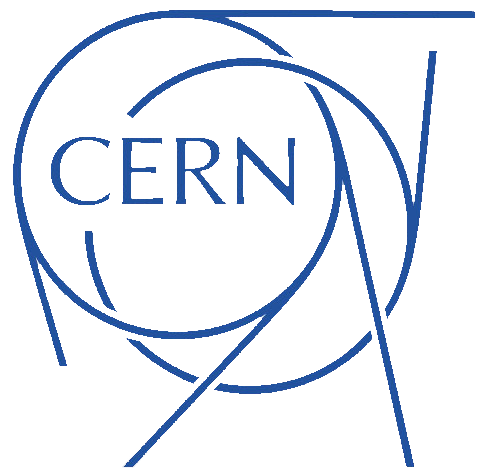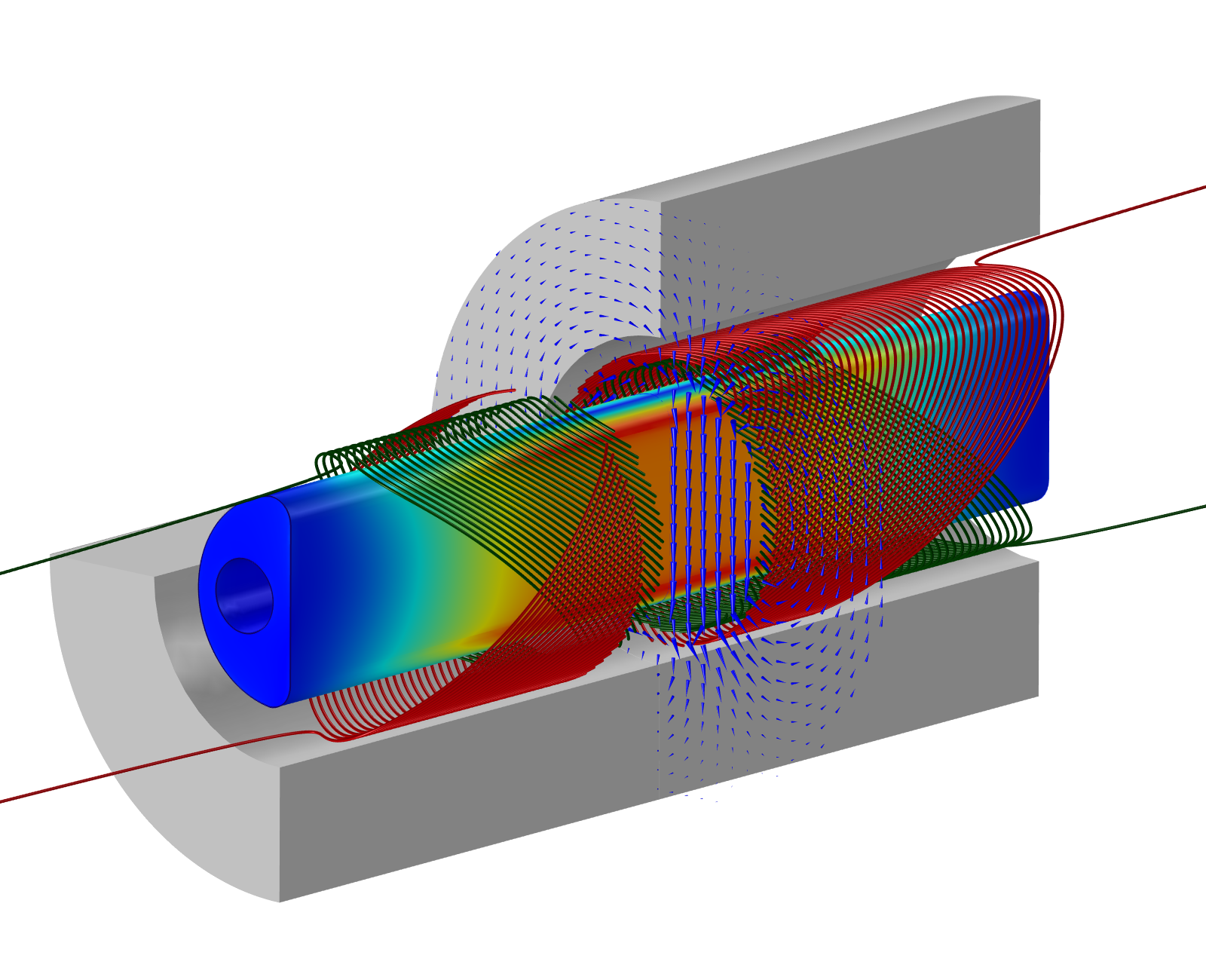SuShi septum is an acronym for Superconducting Shield septum. The project is a collaborative effort between CERN and Wigner Research Centre for Physics (Budapest, Hungary) to evaluate the feasibility of using a superconducting shield to create a high field extraction septum magnet for high-energy accelerators.
The research group is grateful for the support of the SM18 and the Magnetic Measurements teams, the CERN TE-ABT group and the FCC Study Coordination group. The team receives funding from the European Commission under the FP7 Research Infrastructures project EUCARD-2, grant agreement no. 312453, the European Union’s Horizon 2020 research and innovation programme (ARIES) under grant agreement No 730871, the FCC Study group and the Hungarian National Research, Development and Innovation Office under grant #K124945.
The page is underdevelopment; any comments are welcome.
 |  |  |  |
 |
Particle colliders store two beams of charged particles rotating in opposite directions. The two beams cross each other at well defined positions (the interaction points) along the ring, where they are focused to a very small size in order to increase the probability of collisions. At other locations in the ring the two beams are separated. The operation of these rings is typically cyclic.
In the first step the injector accelerator (which might be either a linear accelerator, or another accelerator ring) fills the ring (in both directions)
The two beams are then accelerated to the nominal energy of the ring.
In the collision phase the energy of the particles is kept constant and the two beams are crossed at the interaction points. The physics experiments register the particles produced in the collisions. This phase is about 10 hours in case of the LHC.
When the intensity of the circulating beams, and hence the collision rate has decreased below a certain limit, the beams are dumped from the ring, and the cycle starts from the first step again.
The energy stored in the circulating beams can be enormous. For the LHC it is equivalent to the kinetic energy of a TGV fast train running at a speed of 150 km/h (see other examples). For the Future Circular Collider the stored energy (8.4 GJ) corresponds to the kinetic energy of 24 TGV fast trains. Since these beams have a typical size below a millimeter, their energy is extremely destructive even when their intensity is too low for the physics experiments, and can easily destroy the machine itself if control is lost. Therefore the beams must also be dumped in case of the indication of any failure in the system.
The beam extraction system is illustrated in Fig. 1 below. When the ring is filled, a particle free abort gap is created in the fill pattern. A fast pulsed kicker magnet system gives an initial, typically small kick to the beam. Even though these magnets reach their nominal field very quickly (typically on the μs scale), during their risetime they would sweep the beam downstream, therefore their trigger is synchronized with the passage of the abort gap through the kickers.
After some distance the small angle of the kicked beam leads to a spatial separation from the circulating trajectory. The beam then runs into a special septum magnet, which creates a high field at the location of the extracted beam, and zero field at the location of the circulating beam. The high field of this device deviates the extracted beam further, which then enters the dump beamline.
The beam power of the LHC is so large that it would destroy any material if it impacts at a single point. This is even more true for the FCC: its beam would penetrate through about 300 m of copper, evaporating the material on its way. The beam energy therefore must be distributed over a large surface on the beam dump. This is realized by a system of magnets in the dump line, the dilution kickers, which sweep the beam along a spiral pattern on the surface of the beam dump block.
When a conductor material is exposed to changing external magnetic fields, eddy currents are induced on its surface in such a way that their magnetic fields try to compensate the change of the external field inside the material. This is Lenz's law. For example if a conductor material is initially in zero magnetic field, and it is then exposed to a quickly rising external field, the eddy currents will try to keep the field level at zero inside the material. Due to the finite resistivity of usual materials these currents quickly decay, and the magnetic field will finally penetrate the material with some delay.
Superconductors are characterized by zero resistance. This means that the eddy currents will have very long lifetimes (days or weeks). If a superconductor was cooled down to the superconducting state in zero external field, a ramped-up field will be excluded from the material even if the ramp is slow, and the field is then kept at a high level for a long time. Since the eddy currents try to oppose any change of the magnetic field, the superconductor must be cooled to the superconducting state in zero external field, otherwise it would trap the initial field.
This phenomenon is not to be confused with Meissner's effect, in which a superconductor material expels the magnetic field upon its phase transition to the superconducting state even if cooled down in a non-zero external field. This effect only works up to a few mT field level, which is insufficient for our purpose.

As explained in the "Beam extraction" section, a septum magnet must create a high magnetic field at the location of the extracted beam, and zero field at the location of the circulating beam. This can be realized by installing a superconducting shield around the circulating beam, and an external excitation magnet which produces a high magnetic field, as illustrated in Fig. 1.
In this concept the homogeneous magnetic field near the shield is created by a canted cosine theta-like superconducting magnet. This magnet configuration is an old idea which is rediscovered recently and the subject of many active R&D projects.
2018 April
A new concept using the combination of a canted cosine theta-like superconducting magnet and a half-moon shaped superconducting shield is proposed at the FCC Week in Amsterdam
2018 March
A superconducting shield made of a NbTi/Nb/Cu multilayer sheet was tested at CERN SM18. 4+4 layers were used to make two half cylinders, which were clamped to a central support rod. With a total thickness below 4 mm the shield could shield 3.1 T on its exterior surface. The shield was very stable, there were no flux jumps even at a ramp rate of 50 mT/s of the external field.
2017 April
The high-temperature superconductor tape prototype is being tested at SM18. The shield is produced by 25 layers of GdBCO tape helically wrapped to a supporting copper tube, produced by SuperOx.

2017 February
During the first two weeks of the month the first prototype has been successfully tested at CERN SM18. The shield is a MgB2 tube with a length of 450 mm, an outer diameter of 49 mm and inner diameter of 32 mm. The shield was installed into a spare LHC dipole corrector magnet (MCBY), and could perfectly shield a field of 2.6 T on its surface.


-
:
NbTi/Nb/Cu multilayer shield for the superconducting shield (SuShi) septum.
IEEE Transactions in Applied Superconductivity 29 (2019), 4900108 (Date of publication: 2 October 2018)
[see on arxiv]
This article was on the front cover of IEEE TAS Vol. 29 No. 1. - : Superconducting Shield (SuShi) septum: towards a full prototype. Talk presented at FCC Week 2018, 09-13 April, Amsterdam
- : Numerical and experimental studies of the magnetic shielding performance of an MgB2 tube for the superconducting shield septum project. Poster presented at FCC Week 2018, 09-13 April, Amsterdam
- : Creep and relaxation phenomena in a long MgB2 tube subjected to transversal magnetic field, at 4.2 K. IEEE Transactions on Applied Superconductivity, Vol. 28, pp 1-5 (2018)
- : Shielding magnetic fields of several Tesla: the FCC SuShi project (talk presented at Mini-workshop on Impact of Stray Fields on Accelerators, 4-6 October, 2017)
- : How will SuShi protect the FCC? News in the CERN Bulletin (June 2017)
-
:
First experimental results with the superconducting shield (SuShi) prototypes,
talk at FCC Week, Berlin, June 1st, 2017, 13:48 -
:
High field septum magnet using a superconducting shield for the Future Circular Collider
Phys. Rev. Accel. Beams 20, 041002 (2017)
| ☞ | barna.daniel@wigner.mta.hu |
| ☏ | +36-1-3922222/1882 |
| ⛟ | Wigner Research Centre for Physics, 1121 Budapest, Konkoly-Thege Miklós út 29-33. |